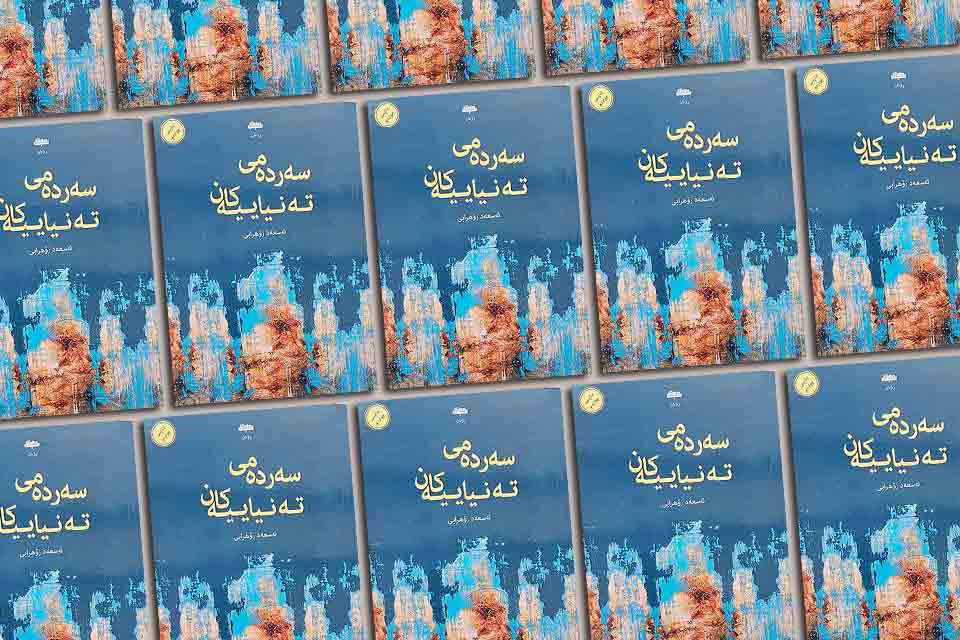A Novelist from the Kurdish City of Earring: Asaad Zohrabi’s The Age of Lonelinesses

Published in 2023, The Age of Lonelinesses is Asaad Zohrabi’s debut novel. Born in 1978 in Ravansar, Kermanshah, Iran, Zohrabi has already released four volumes of poetry. His first foray into the novel genre has garnered enthusiastic acclaim from both readers and critics, achieving a fourth edition within just two years. Furthermore, the work has been honored with the Kaal Literary Award—a local accolade in Kurdish literature—and Hajar Pen Award, a prestigious book award.
Set in the Kermanshah Province in western Iran in the Kurdish city of Ravansar—referred to in the novel as the City of Earring due to the city’s shape—The Age of Lonelinesses narrates a tale of unrequited love between Zana and Avin. (Zana is a Kurdish male name meaning “knowledgeable”; Avin is a Kurdish female name meaning “love.”) Above the Earth dwell ethereal beings known as Lonelinesses, who each await their turn to assume human form. According to the novel’s cosmology, every human being once existed as a loneliness in the sky before choosing to take on material form. This imaginative framework enables the author to transcend conventional boundaries of time and space, infusing the narrative with a distinctive sense of magical realism.
The story set on Earth, in the City of Earring, unfolds with minimal plot twists. Zana, the protagonist and narrator, recounts the development of his relationship with Avin, a neighboring girl a few years his senior. Beginning from his early childhood, Zana reveals how Avin eventually distances herself from him and marries a man named Manoochar. He also discovers that Asem—a mischievous boy who frequently visits Avin’s home—is, in fact, her half-brother. As the story is presented from Zana’s perspective, the reader gains only partial insight into Avin and other characters, which ultimately highlights his unreliability as a narrator—particularly when other characters reveal some of the secrets.
However, the relatively straightforward love story unfolds in a unique setting and sociopolitical context. The Age of Lonelinesses takes place in a small Kurdish city in Iranian Kurdistan during the early years after the Islamic Revolution and throughout the Iran–Iraq War (1980–88). The fate of Zana and the other characters is deeply intertwined with these historical and political events, particularly those that shaped the lives of Kurds in Iran. The trajectory of the plot—and especially the destinies of the characters—is inextricably linked to the Iraqi aerial bombardments. Several central characters are killed in these attacks, and Zana himself is permanently paralyzed as a result of an Iraqi airstrike.
What distinguishes the novel as a thought-provoking and unconventional work is the presence of an additional narrative layer, presented by an extradiegetic omniscient narrator who transcends linear time, creating a metanarrative through the novel’s structure. The realm of the Lonelinesses shifts fluidly between past and present, and geographically from Kurdistan to distant lands spanning Europe to Mongolia. Within this expansive tale, the novel engages with profound philosophical, historical, and political questions concerning the universal human condition while also reflecting specifically on the Kurdish experience.
The novel engages with profound philosophical, historical, and political questions concerning the universal human condition while also reflecting specifically on the Kurdish experience.
Themes of democracy, freedom, and humanity are explored through these marginal historical narratives. Yet perhaps the most compelling aspect lies in how Kurdistan and the Kurdish people are represented within these mythic and symbolic layers. It is here that the novel revisits some of the most harrowing traumas and tragedies endured by the Kurds, including the chemical bombing of Halabja and the Anfal genocide carried out under Saddam Hussein in Iraqi Kurdistan. These narratives also offer alternative perspectives on historical figures, presenting lesser-known or reimagined stories. For instance, the Iranian monarch Karim Khan Zand—often portrayed as a benevolent and peace-seeking ruler—is depicted in a more complex light, as is Nader Shah Afshar, who is portrayed as a cruel figure who blinded his own son, descended into madness, and was ultimately assassinated by his close commanders. In one particularly imaginative episode, the novel introduces a symbolic portrayal of Adolf Hitler, who, in the world of the Lonelinesses, existed as Fat Loneliness before his incarnation as a human. This allegorical depiction suggests that the origins of human cruelty and violence lie in the depth and density of existential loneliness. Ultimately, it is through these extended tales that the connection between the characters in the City of Earring and the metaphysical world above is gradually revealed, giving the novel its layered complexity and philosophical depth.
Reading Zohrabi's novel proves to be both intellectually engaging and demanding. The narrative frequently shifts to historical events that diverge from those presented in conventional historical accounts, blending elements that are partially rooted in reality with those that are purely imaginative. This synthesis of fact and fantasy compels the reader to reconsider established perspectives, particularly regarding Kurdistan and the destiny of its people.
University of Kurdistan















